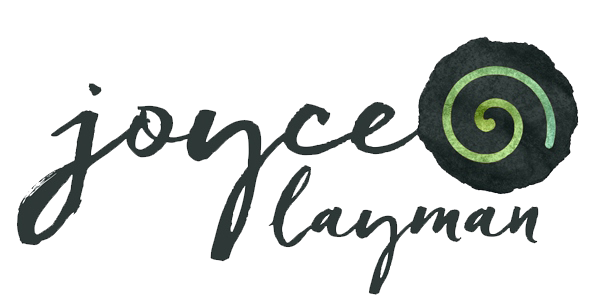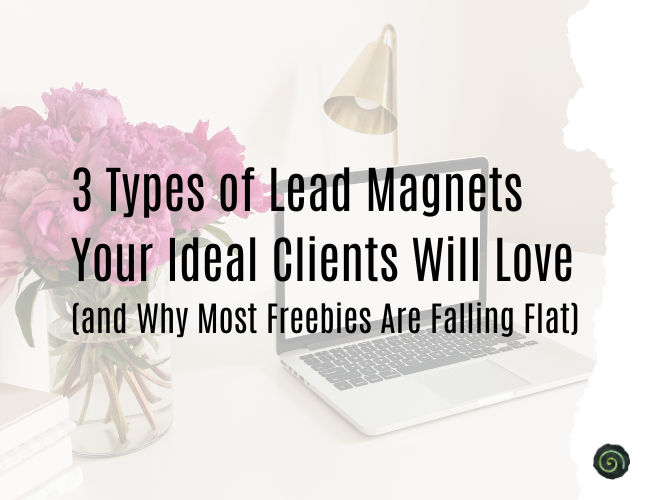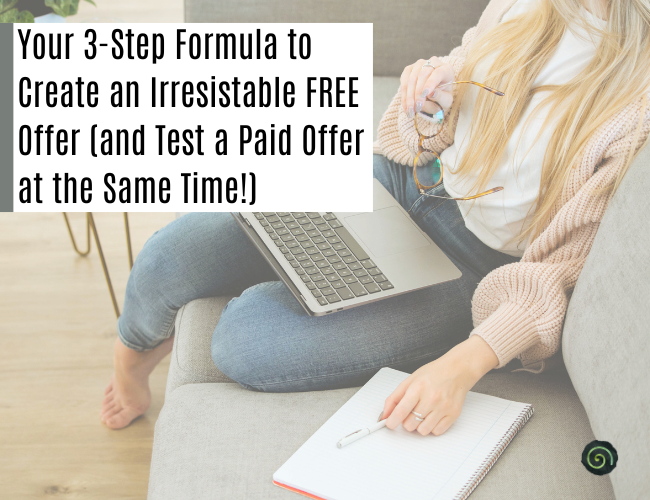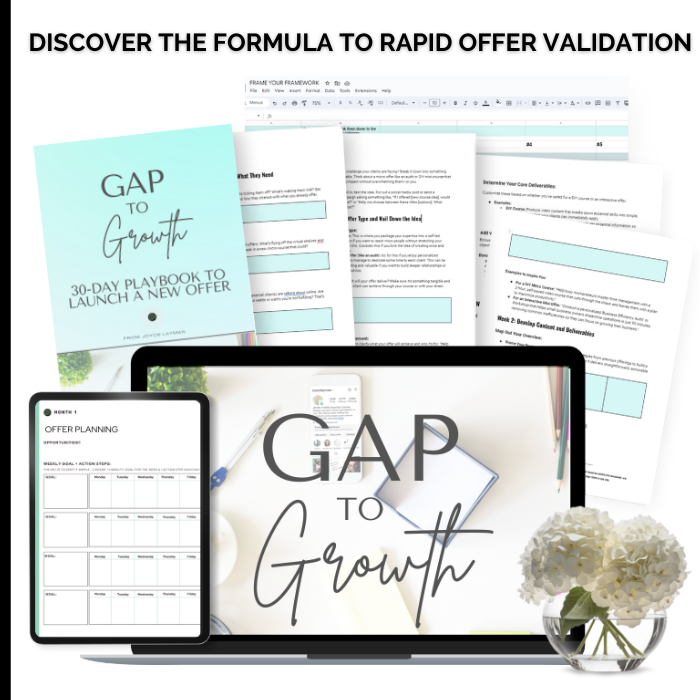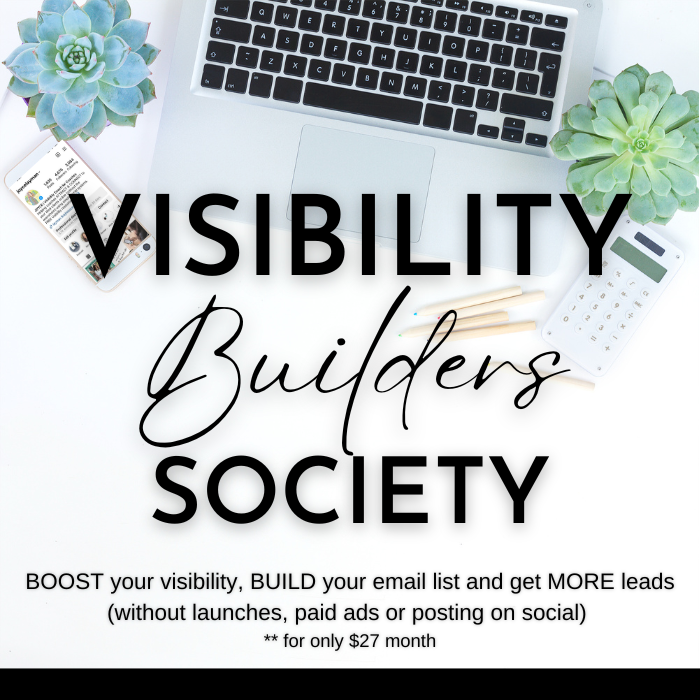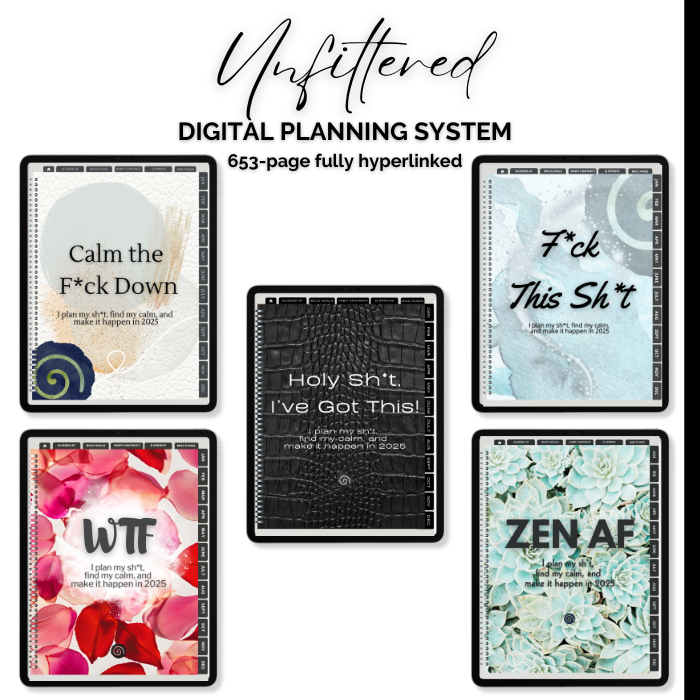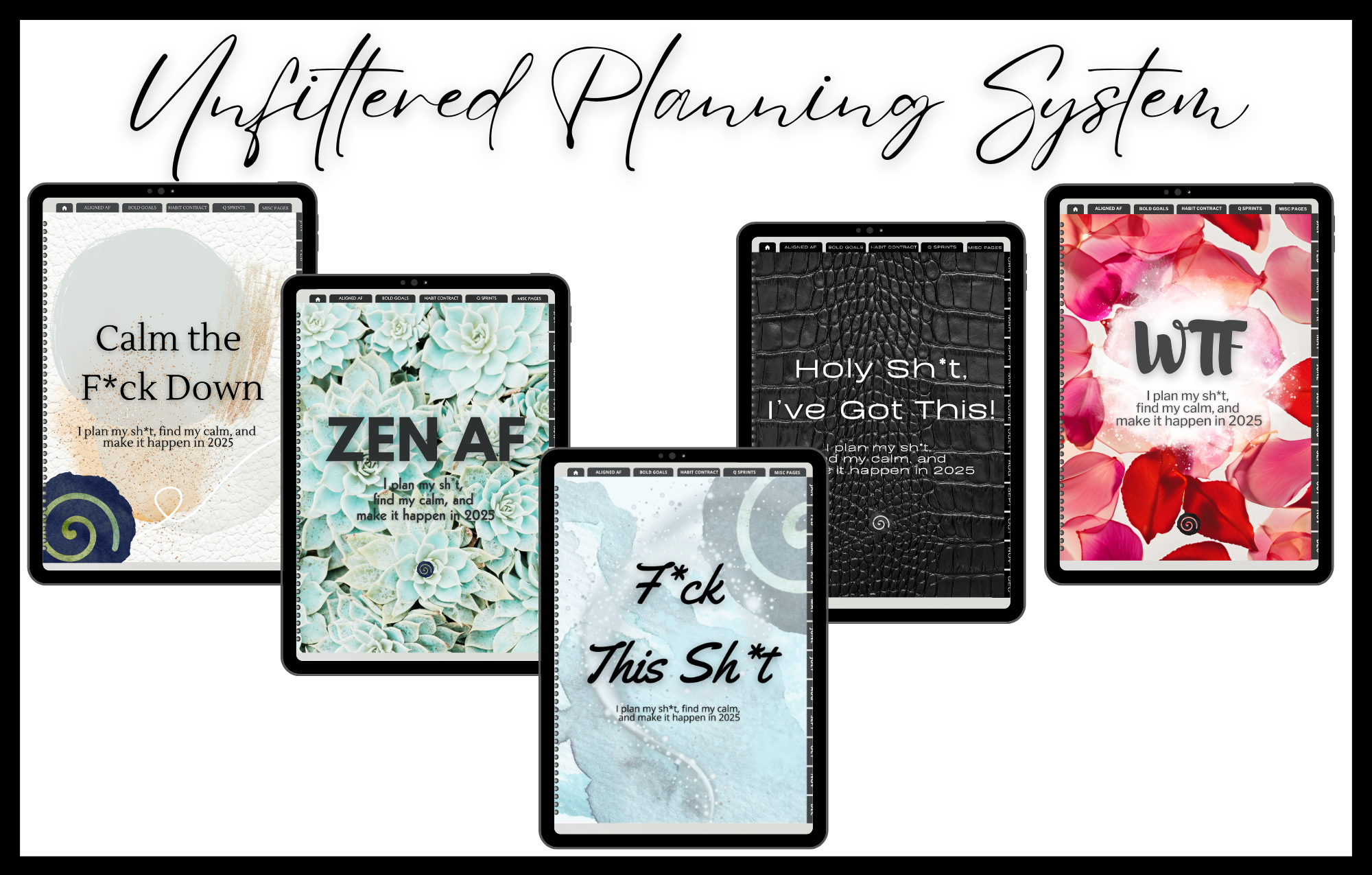You know you need a lead magnet.
You’ve probably heard that phrase tossed around in webinars, Instagram posts, or by that business coach who swears her free checklist brought in 1,000 new subscribers overnight. But here’s the thing most people won’t tell you:
✅ The wrong lead magnet attracts the wrong people.
✅ The right one positions you as the obvious next step.
And the difference between the two? Has everything to do with understanding where your ideal client is in their journey.
Let’s unpack what that means — and what to offer based on how ready your audience actually is to work with you.
What Most People Think of When They Hear “Lead Magnet”
If you’ve been in the online business world for more than a hot minute, chances are you’ve seen the usual suspects when it comes to lead magnets:
📝 Ultimate Guide or How-To Tutorial
Break down a step-by-step process your audience wants to master.
✅ Cheat Sheet
A one-page snapshot that helps simplify something overwhelming.
🔧 Resources & Tools List
Your go-to books, tools, or apps — all in one handy roundup.
📋 Checklist
A step-by-step list to help someone feel prepared or organized.
🧩 Template
A plug-and-play format that removes the guesswork.
📊 Spreadsheet
Perfect for the organized (or the ones who wish they were). Think calculators, planners, or budget sheets.
And don’t get me wrong — these can absolutely work. But here’s where most people go wrong…
❌ It’s Not About the Format. It’s About the Fit.
A freebie that works for one type of client won’t always work for another.
🧩 If your audience is brand new, a 5-day course might overwhelm them.
🎧 If your audience is advanced, a one-page checklist might feel like fluff.
Your lead magnet should match what your dream client needs to believe or experience before they’re ready to hire you or buy from you.
That’s why we need to shift from “what type of lead magnet should I make?” to:
“What does my ideal client need in order to say yes?”
I Thought I Had a Great Lead Magnet… Until No One Stuck Around
When I first stepped into the online space, I did what made sense: I took content from my Networking ROI book (written in 2015) and turned it into a lead magnet.
Smart, right?
It was relevant to my background, looked great in Canva, and ticked all the boxes of what I thought a lead magnet should be.
But here’s what actually happened:
📉 My signups weren’t converting.
📉 People would grab the freebie and disappear.
📉 I realized I was attracting people who wanted free info — not transformation.
Why? Because I didn’t think through who I was actually talking to… or what they really needed in that moment. I gave them something they could’ve Googled. I didn’t create a lead magnet that aligned with their beliefs, buying stage, or learning style.
Now? I approach lead magnets differently.
And inside The Society, I teach my clients to do the same.
The Real Purpose of a Lead Magnet (Hint: It’s Not Just to Get Emails)
A lead magnet should do more than build your list.
It should:
- Attract aligned buyers, not just freebie-seekers
- Shift a belief that makes them more ready for your paid offer
- Reflect your unique voice and point of view
- Build trust with your future clients — even before they meet you
But that only happens when your lead magnet matches where your dream client is right now — not where you wish they were.
So let’s look at the three types of lead magnets your ideal clients actually want, based on where they are in their life or business.
✅ If They’re Just Starting: They Want Confidence, Not Complexity
These are the people who are searching terms like:
- “How do I get my first coaching client?”
- “What should I post online?”
- “Where do I even start?”
They’re overwhelmed. Drowning in information. And desperate for a quick win that helps them feel confident taking the next step.
🧠 What they need:
➡️ Clarity
➡️ Simplicity
➡️ A “you’ve got this” energy
💡What works:
A checklist, cheat sheet, or one-page roadmap that gives them a clear result — fast.
Why this matters:
You’re helping them feel successful before they’ve even hired you. And that feeling of “this person gets me” is what turns a freebie grab into a future sale.
✅ If They’re in the Messy Middle: They Want Strategy That Moves the Needle
These folks have been around the block.
They’ve tried a few things, maybe hired a coach or two, but they’re still not seeing the results they want. They don’t need more surface-level tips — they need someone who can show them the why behind what works.
🧠 What they need:
➡️ A deeper perspective
➡️ A shift in their current strategy
➡️ Proof that your approach works
💡What works:
A mini audio course, multi-day email series, or guide that introduces your unique process (without overwhelming them).
Why this matters:
This is your chance to show what makes your methodology different — and give just enough value to earn their attention, without teaching so much that they don’t need your paid offer.
✅ If They’re Advanced: They Want Insight, Not Instruction
These are your most ready-to-buy clients. They’ve invested before. They’re actively building. And they do not want another 35-page PDF that’s going to sit unopened on their desktop.
🧠 What they need:
➡️ A new perspective
➡️ Efficient content they can consume quickly
➡️ A taste of your thought leadership
💡What works:
A private podcast, workshop replay, or short audio series delivered via Hello Audio or another listening platform.
Why this matters:
These clients are busy. But they’re still hungry for insight. Delivering your lead magnet in a format they can listen to while driving or walking? That builds trust fast — and makes you stand out as the kind of coach or expert who respects their time.
✅ Why Your Email List Matters More Than Your Followers
Let’s get one thing straight — social media is great for visibility, but it’s not where sales happen.
Your DMs might spark conversations. Your Reels might go viral. But if you’re not building an email list alongside your content? You’re putting your business on borrowed ground.
📌 You don’t own your social media audience.
Algorithms change. Accounts get hacked. Reach drops overnight.
📌 You do own your email list.
You can reach your people directly — anytime. No algorithm. No guesswork.
Even better? Email gives you two powerful insights:
✅ It tells you who’s ready for more. You can track who opens, clicks, and engages — which makes segmenting and selling so much easier.
✅ It gives you a second touchpoint. When people follow you on IG and join your list, that multiplies your trust factor.
That’s why I’m so passionate about lead magnets — they’re the bridge between your audience and your email list. They move people off a platform you don’t control… onto one you do.
What Most People Miss When Creating Lead Magnets
Most online business owners create lead magnets like this:
👎 “What would look good in Canva?”
👎 “What’s something easy I could make?”
👎 “What freebie would go viral on Pinterest?”
And while yes, design and promotion matter — none of those questions answer what truly counts:
“What does my ideal client need to believe before they’re ready to buy from me?”
When your lead magnet meets that need, something magical happens:
✨ You stop begging people to stay on your list.
✨ You stop attracting the wrong audience.
✨ You start seeing real results — from the right people.
And if you need help figuring out what type of lead magnet fits your dream client right now?
🎯 Download my Ultimate Lead Magnet Formula — it includes a Canva template so you’ll be done and fast!
>>> GET THE FORMULA
Lead Magnets Are Just the Beginning… The Strategy Starts Here
Your freebie is just the spark. The start of the conversation. But if you want your lead magnet to actually lead somewhere, you need a clear strategy behind it.
That’s exactly what we dive into inside The Society — where I help coaches and creators: ✅ Craft lead magnets that align with your offer
✅ Map out nurture sequences that build trust
✅ Grow a list of buyers, not browsers
You’ve got something worth sharing.
Let’s make sure it reaches the people who are ready to hear it.
